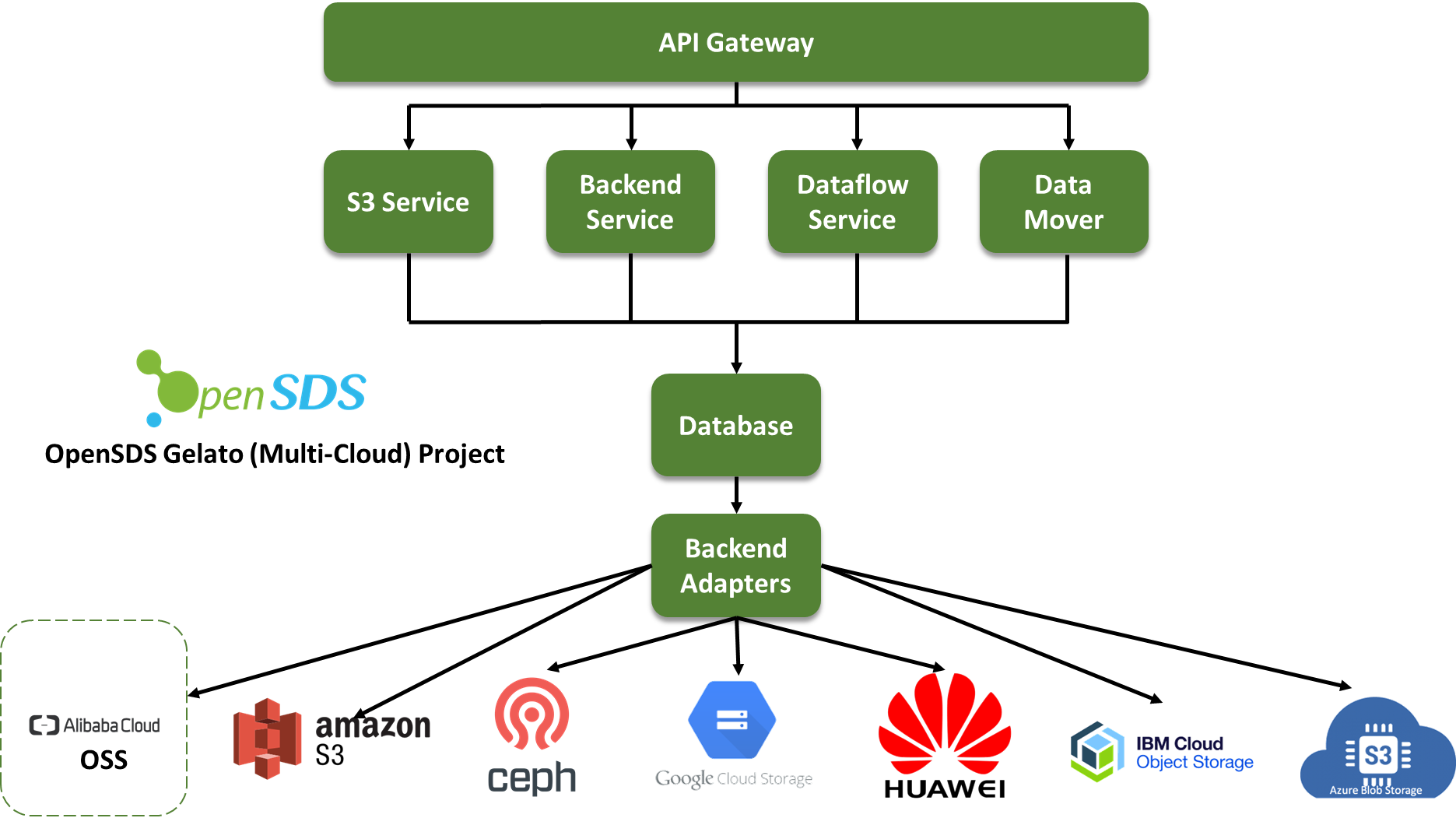*By Rupal Shirpurkar, Alibaba Cloud MVP and Business Head (Cloud BU - APAC) Click2Cloud Inc.
Before the integration of Alibaba, Gelato project of OpenSDS does not support object management on the Object Storage Service (OSS) of Alibaba Cloud. The Gelato project is developed by the SODA Foundation and is typically used for multi-cloud projects, supporting object operation performance, lifecycle management, and object management for different cloud vendors.
Alibaba Cloud as a back end in OpenSDS multi-cloud project integration helps in object operation, lifecycle management. Users can perform in-cloud and cross-cloud migration for Alibaba cloud using the Gelato project for Alibaba cloud OSS service.
OpenSDS is an open-source community working to address storage integration challenges, particularly in scale-out cloud-native environments with heterogeneous storage platforms.
The image below illustrates the architecture of the integration of Alibaba cloud in OpenSDS/ multi-cloud.

Fig: Architecture of Integration of Alibaba cloud in OpenSDS/multi-cloud
Alibaba Cloud Object Storage Service (OSS) helps users to conduct operations related to bucket and object storage in simple ways. Alibaba OSS adapter helps the user with:
For a multi-cloud data engine, the team sketched the architecture diagram that presents the ability to migrate data across multiple clouds. The multi-cloud architecture diagram defines the concept of multi-cloud in OpenSDS clearly. Also, the user will be able to migrate its bucket from any OpenSDS supported public cloud or local storage to Alibaba Cloud.
Let us see some of the significance of the architecture diagram above:
The integration of Alibaba cloud in OpenSDS/multi-cloud architecture offers number of reasons to deploy into it which often results in reducing reliance on a single vendor, increasing flexibility, cost-efficiency, adherence to local policies, and a lot more.
Users use OpenSDS multi-cloud data engine to move data to a location near to where it is needed for convenience. Data can be moved to different locations depending on usage, age, access frequency.
Alibaba integration with the OpenSDS data engine allows data to be available and accessible all the time. In the case where one cloud is down, the user can still have access to data in another cloud that is up and running.
A multi-cloud data engine provides policy-based data mobility across public and private clouds. These public and private clouds can be used in the following cases:
Without this integration, users were not able to perform object related operations for Alibaba Object Storage Service on Multi Cloud Project of SODA (i.e. Gelato Project). Alibaba Cloud has committed to extend the OpenSDS capabilities for Data Storage and Migration for a multi-cloud design and multi-cloud providers. Integration with Alibaba cloud as backend in OpenSDS leads to a solution to many cloud storage vendors to come up with Object Storage Service (OSS) issues.
Network Functions Virtualization/Virtual Private Cloud: Way to Modernize Network

107 posts | 8 followers
FollowAlibaba Cloud Project Hub - July 16, 2021
Alibaba Clouder - February 19, 2021
Alibaba Clouder - February 9, 2021
Alex - June 21, 2019
Alibaba Clouder - September 28, 2018
Alibaba Cloud Native Community - July 26, 2022

107 posts | 8 followers
Follow Hybrid Cloud Distributed Storage
Hybrid Cloud Distributed Storage
Provides scalable, distributed, and high-performance block storage and object storage services in a software-defined manner.
Learn More OSS(Object Storage Service)
OSS(Object Storage Service)
An encrypted and secure cloud storage service which stores, processes and accesses massive amounts of data from anywhere in the world
Learn More Storage Capacity Unit
Storage Capacity Unit
Plan and optimize your storage budget with flexible storage services
Learn More Hybrid Cloud Storage
Hybrid Cloud Storage
A cost-effective, efficient and easy-to-manage hybrid cloud storage solution.
Learn MoreMore Posts by Rupal_Click2Cloud
Start building with 50+ products and up to 12 months usage for Elastic Compute Service
Get Started for Free Get Started for Free